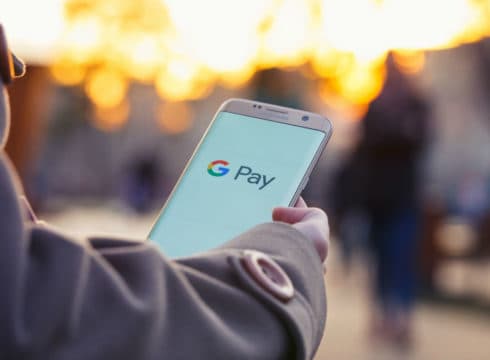The Federal Reserve is working on real-time payments platform called FedNow
Google has listed its experience of building on India’s UPI standard and how the US can replicate it
Google says UPI’s biggest advantage is that it is an open payment system
Inc42 Daily Brief
Stay Ahead With Daily News & Analysis on India’s Tech & Startup Economy
After nearly two years of launching digital payments application in India based on the Unified Payments Interface (UPI) standard, Google has now recommended a similar payment system to the United States Federal Reserve Bank.
In a letter to the US’ central bank, Google submitted its stakeholder comments for the bank’s plans to introduce FedNow, a new interbank real-time gross settlement (RTGS) service. The company said it supports inclusive and open digital payments and suggested that FedNow should be an open payment system akin to UPI.
To begin with, according to the details available, FedNow will help enable financial institutions to deliver end-to-end faster payment services to their customers. In comparison, UPI is a system that powers multiple bank accounts into a single mobile application, merging several banking features, seamless fund routing and merchant payments into one hood.
Google has listed down its experience of building the UPI app in India and the lessons from the same.
India Experience: Building Google Pay
In September 2017, Google launched Tez app, enabled with UPI, and tied up with banks such as Axis, HDFC Bank, ICICI and State Bank of India and others to enable instant transfer of funds between banks.
Google in its letter to Fed has said that as UPI was thoughtfully planned, critical aspects of its design led to its success. The company highlighted three key aspects of UPI— interbank transfer system, real-time system and “open- meaning technology companies can build applications that help users directly manage transfers into and out of their accounts held at banks.”
Google further said that the approach in India attained amazing results for banks, consumers, other players within the payments ecosystem and India’s central bank.
“After just three years, the annual run rate of transactions flowing through UPI is about 10%of India’s GDP, including 800 Mn monthly transactions valued at approximately $19 Bn,” the company said.
The company also highlighted that both pre-existing and new players in the financial ecosystem benefited, and both new and pre-existing digital payment systems saw increased utilisation. “This system successfully encouraged close collaboration between technology and financial services providers, and created winning opportunities across the ecosystem,” it said.
As a result, Google had three key learnings:
- Industry and government should work together to grow ecosystems where payments are inclusive
- Payment systems should fully enable banking through mobile devices
- Google favors open systems where technology and financial services providers can collaborate in a conscientious way
The UPI Journey In India
India is expected to clock the fastest growth in digital payments in terms of transaction value between 2019 and 2023 with a compounded annual growth of 20.2%, according to an Assocham-PWC India study.
A Boston Consulting Group (BCG) presentation said that between 2021-22 and 2024-25, the role of cash in the payments space will be meagre. The report said that UPI will dominate the payments space with 59% payment transactions.
“This would be followed by mobile and internet-based payments, which will constitute a fifth of the total number of cash and non-cash transactions,” the report added. In November 2019, UPI recorded 1.22 Bn transactions worth INR 1,89,224 Cr.
The leading players in the UPI landscape of India are Google Pay, PhonePe, Paytm etc. In December, PhonePe claimed that it has crossed five billion transactions on its app, which includes UPI and mobile wallets.
As per Google, two out of three transactions on Google Pay have come from over 300K villages, towns and cities, beyond the Tier 1 cities. The company also claims to have achieved over 3X user growth in 12 months, from 22 Mn monthly active users (MAUs) in September last year to 67 Mn in September 2019.
According to RBI’s payment and settlement systems in India Vision 2019-2021, payment systems such as UPI/IMPS are likely to register average annualised growth of more than 100% and NEFT at 40% over the vision period.
{{#name}}{{name}}{{/name}}{{^name}}-{{/name}}
{{#description}}{{description}}...{{/description}}{{^description}}-{{/description}}
Note: We at Inc42 take our ethics very seriously. More information about it can be found here.


